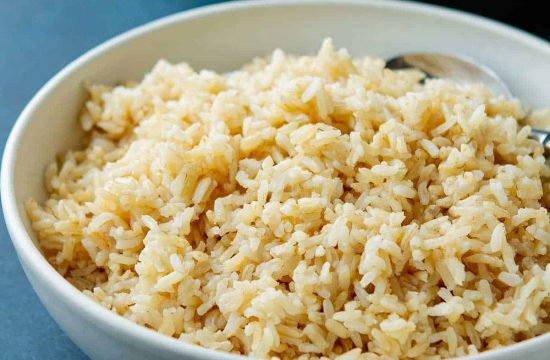Article by Dr Manasa. S, B.A.M.S
Foot pain is a common complaint that can significantly impact daily life and mobility. It serves as a signal that there may be underlying issues affecting the intricate structures within the foot or its interaction with external forces. Understanding the nature of foot pain, its causes, and its relevance is crucial for effective management and prevention of further complications.
The foot serves as the foundation of movement for the lower extremities, boasting a complex composition of bones, joints, muscles, tendons, ligaments, and other supportive tissues. With 26 bones, 33 joints, and a myriad of interconnected structures, the foot facilitates efficient shock absorption and propulsion necessary for walking and running. Its architecture includes two vital arches—longitudinal and transverse—which distribute weight and provide stability during weight-bearing activities.
The interaction between the foot and the lower leg forms the ankle joint, while the toes contribute to balance and propulsion. Ligaments, muscles, and tendons work in harmony to maintain optimal alignment and function, ensuring smooth movement and support.
Additionally, the foot’s soft tissue structures serve as a protective barrier against external hazards such as infection and trauma, while also aiding in weight distribution and impact absorption.
When foot pain arises, it signifies a disruption in this intricate system. The location, timing, and nature of the pain provide valuable clues regarding the underlying issue. Moreover, the body’s response to pain often involves compensatory movements or biomechanical changes, which can inadvertently lead to further injury or dysfunction if left unaddressed.
In this context, exploring the various causes of foot pain and understanding its implications is essential for effective diagnosis and treatment. By recognizing the significance of foot pain and its impact on overall mobility and well-being, individuals can take proactive steps to address underlying issues, alleviate discomfort, and maintain optimal foot health.
Before we go into the details of disorders concerned with foot pain, let us understand the basic structural anatomy of foot.
The foot has 26 bones and is divided into three parts: hindfoot, midfoot, and forefoot.
– The hindfoot, at the back of the foot, includes the talus and calcaneus bones. These bones form the subtalar joint, allowing for movement of the ankle and hindfoot.
– The midfoot is made up of bones like the navicular, cuboid, and cuneiforms, which contribute to the foot’s arch and stability.
– The forefoot, at the front, consists of metatarsals and phalanges (toes). Ligaments like the Lisfranc ligament help stabilize the midfoot and forefoot.
Blood supply to the foot comes from arteries like the anterior tibial and posterior tibial arteries, while nerves such as the saphenous and fibular nerves provide sensation.
Muscles in the foot can be categorized as extrinsic (outside the foot) and intrinsic (inside the foot), helping with movement and stability. They include muscles like tibialis anterior and flexor digitorum brevis.
Overall, the foot’s complex structure supports body weight, absorbs shock during movement, and plays a crucial role in walking and running.
Foot pain can manifest on various parts of the foot, including the top, bottom, or sides, affecting areas like the heel, toes, and arch.
Lifestyle causes
– Foot pain can stem from diverse factors such as prolonged standing, aging, injury, overuse, obesity, or ill-fitting footwear.
– Causes may encompass sprains, strains, osteoarthritis, tendonitis, gout, plantar fasciitis, among others, with symptoms varying across the foot.
Few common medical causes
Pinpointing the origin of foot pain is crucial in treatment and management. Different types of foot pain and their prevalent causes include:
‘Top of Foot’ Pain:
– Possible causes – Sprains or strains osteoarthritis, tendonitis, gout
‘Bottom of Foot’ Pain:
– Possible causes may include – Plantar fasciitis, Morton’s neuroma, flat feet, sprains, bunions, corns, calluses, osteoarthritis, bursitis, plantar warts.
‘Side of Foot’ Pain:
– Potential triggers: Bursitis, bunions, peroneal tendonitis, posterior tibial tendon dysfunction (PTTD), stress fractures, Jones fracture, cuboid syndrome.
‘Foot Heel’ Pain:
– Common symptoms arise from plantar fasciitis, Achilles tendonitis, bursitis, heel fracture, Achilles tendon rupture.
Toe Pain:
– Causes might include ingrown toenails, bunions, gout, hammertoes, broken toe, Raynaud’s syndrome.
‘Nerve Pain’ in Foot:
– Nerve pain sensations like burning, tingling, or electric shocks may indicate conditions such as burning feet syndrome, Baxter’s neuropathy, tarsal tunnel syndrome, peripheral neuropathy, sciatica, or diabetes-related neuropathy.
Diagnosis
– Physical examination
– X- ray
– MRI
Treatment and management of pain:
The treatment of the foot pain depends on the area affected and reasons behind it. Few possible remedies for foot pain are as under:
– Steroid injections
– Physical therapies
– Orthotics or shoe inserts
– Shoes that support the foot specifically
– Removal of corns, calluses or plantar warts
– Foot surgery
– Using casts or splints for broken bones.
1. Opt for comfortable, properly fitting shoes with good arch support, cushioning, and ample room around the ball of your foot and toes. Avoid narrow-toed shoes and high heels.
2. Prioritize wearing sneakers, particularly for walking, and replace running shoes regularly.
3. Incorporate warm-up and cool-down routines into your exercise regimen, including stretching exercises. Pay particular attention to stretching your Achilles tendon and the plantar fascia to maintain optimal foot mechanics.
4. Gradually increase your exercise intensity over time to prevent overstraining your feet.
5. If necessary, aim to achieve a healthy weight to alleviate potential foot issues.
6. Learn and practice foot-strengthening exercises to address concerns such as flat feet and mitigate discomfort.
Care at home
A warm foot bath, particularly with Epsom salts, can effectively alleviate foot pain and reduce swelling. While other additives like baking soda may target skin conditions, Epsom salts specifically target soreness and swelling. To create an Epsom foot bath, add one cup of Epsom salt to warm water in a tub and soak your feet for approximately twenty minutes to obtain relief.
Do Some Stretches
To alleviate foot soreness and enhance flexibility, incorporating stretching exercises can be beneficial. Targeting specific areas such as the toes or heel, or engaging in comprehensive foot stretches, can mitigate cramping and enhance overall flexibility. Below mentioned are some recommended exercises:
1. Toe Flexibility Exercise: Repeat ten times by flexing, pointing, and curling your toes for several seconds each.
2. Toe and Ankle Warm-Up: Sit down and extend your legs, then move your toes in various directions, pointing them towards and away from your body. Additionally, rotate your ankles clockwise and counterclockwise.
3. Weight Shift Stretch: Stand up and gradually shift your weight from your heels to your toes. Alternate lifting the front and back of your feet off the ground to stretch your entire foot effectively.
Incorporating these exercises into your routine can help alleviate foot soreness and promote greater flexibility.
Practice Strengthening Exercises
To maintain foot health and prevent pain, it’s crucial to prioritize flexibility and strength. Regular walking serves as an excellent exercise to keep your feet limber and robust, while avoiding a sedentary lifestyle is essential. Utilizing a pedometer can help ensure adequate activity levels and foot engagement.
In addition to walking, incorporating resistance exercises can further fortify your feet, reducing the risk of discomfort. Whether using resistance bands, weights, or your own body weight, various exercises can be beneficial:
1. Perform an Achilles stretch against a wall to enhance flexibility.
2. Strengthen toe muscles by picking up marbles with your toes.
3. Strengthen and stretch arches by pulling a towel towards you with your feet while seated.
4. Utilize resistance bands attached to furniture to perform heel stretches, holding each stretch for several seconds and repeating multiple times.
By integrating these exercises into your routine, you can promote foot strength, flexibility, and overall well-being.
Massaging over the feet helps to relieve soreness and improve the circulation to the affected part. Massaging over the painful areas can be done by oneself or can take the help of products like foot rollers.
Buy Arch Supports
Investing on arch supports or orthotics helps in keeping the feet stable during standing or walking and thus helps in elimination of pain. These can be made customized according to the need and thus help in improving the overall functioning of the foot.
Purchasing a new well-fitting shoe helps to reduce the aching foot. Shoes that come with proper arch support can give a new life to the feet. Wearing shoes for all activity helps in reducing the pain and preventing the pain to a larger extent.
Ice Your Feet
Application of ice over the painful areas reduces inflammation and pain. Ice should be kept in a plastic bag and applied over the inflamed part. This method can be done for 5 to 15 minutes a few times a day to relieve the symptoms of foot pain.
Taking pain relieving medicine
Over-the-counter medicines like acetaminophen, ibuprofen and naproxen sodium can target pain as well as inflammation of the foot. Caution regarding usage duration and potential side effects should be kept in mind for prolonged usage.
Apply a topical Pain-Relieving Medication
Application of medications topically to the foot helps with foot pain. There are few medications with the active ingredients such as menthol, eucalyptus, and turpentine, salicylates which have proven effect in reducing the pain and also has a cooling effect on the sore foot.
Wearing Night Splints
Wearing of night splints is advised so that the feet is in a locked position for the entire night which prevents the feet being in a pointing position which can cause foot pain.
When to see a doctor urgently?
– If one experiences severe pain or swelling, particularly following an injury.
– If there is one sided foot swelling which is associated with calf pain
– If there is a sudden and dramatic onset of swelling in the feet
– Possess an open wound or one that exhibits pus drainage.
– If there is shortness of breath alongside swelling or pain in the foot
– If one displays indicators of infection, including redness, warmth, and tenderness in the affected region, or have a fever exceeding 100°F (37.8°C).
– If one encounters difficulty in walking or bearing weight on the foot.
– If one has diabetes and presents with a non-healing wound or one characterized by deep redness, swelling, or warmth upon touch.
Like in any pain, foot pain is also predominantly caused by aggravated vata.
There is a condition called ‘pada shula’ which means foot pain, mentioned amongst eight diseases caused by ‘only vata’ – vata nanatmaja rogas.
Foot pain caused due to vata aggravation is intrinsic and is considered as primary foot pain. Treatment includes anti-vata foods, medicines, lifestyle changes and therapies.
In conditions caused following injury or sprain, vata is involved in later time periods. Here injury is the cause of vata aggravation.
Secondary foot pain is caused due to diseases like amavata, sandhigata vata or vatarakta afflicting the foot. Treatment includes addressing these primary diseases causing foot pain on the lines of their treatment as explained in the classics.
Pitta or Kapha too may be associated with vata in the disease pathogenesis.
Related Reading – ‘Pada Shula – meaning, symptoms, treatment’















